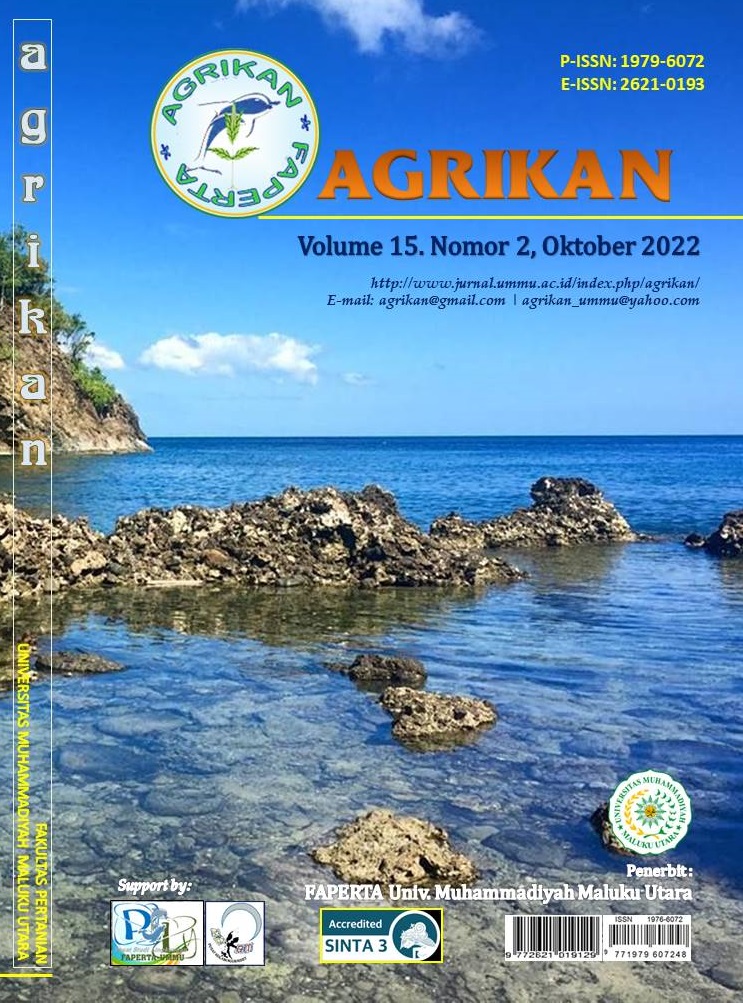Conditions and Direct Economic Benefits of Seagrass Ecosystems in Coastal Waters of Labakkang, Pangkep Regency
DOI:
https://doi.org/10.52046/agrikan.v15i2.1403Keywords:
Seagrass species, density, direct economic valueAbstract
The aim of the study was to analyze the condition of the seagrass ecosystem (identification of species and density) as well as direct economic benefits for the community in the coastal waters of Labakkang, Pangkep Regency. The method that will be used in this study is the identification of seagrass species, density by transect squares and economic value by interviewing fishermen. The results of the identification of seagrass species found on the coast of Labakang are about 5 species, namely Cymodocea rotundata, Enhalus acoroides, Thalassia hemprichi Halophila ovalis, and Halophilla minor and with the highest density of Enhalus acoroides, namely 87 shoots/m2. The Labakang Coast is a coastal area where several rivers enter, so that the average muddy (fine sediment) substrate condition allows the Enhalus acoroides species to grow well. The direct benefit value of the seagrass ecosystem that can be utilized by the Labakkang coastal community is only in the form of catches of various types of biota such as shellfish, sea cucumbers and various types of fish. The total economic value of the direct benefits of the seagrass ecosystem is Rp. 119,110,200/year, with details of shellfish resources of Rp. 25,930,200/year, fish resource of Rp. 56,400,000, the data source for crab crab is Rp. 16,260,000 and sea cucumber resources Rp. 20,520,000/year.
Downloads
Published
Issue
Section
License
Copyright (c) 2022 Hamsiah Hamsiah, Asbar Asbar, Danial Danial, Syahrul Syahrul, Sani Sani

This work is licensed under a Creative Commons Attribution 4.0 International License.

This work is licensed under a Creative Commons Attribution 4.0 International License.













